SCI Publications
2001
M. Berzins, A.S. Tomlin, S. Ghorai, I. Ahmad J.Ware.
“Unstructured Mesh Adaptive Mesh MOL Solvers for Atmospheric Reacting Flow Problems,” In The Adaptive Method of Lines, Note: invited chapter, Edited by A. Vande Wouwer and Ph. Saucez and W. Schiesser, CRC Press, Boca Raton, Florida, USA., pp. 317--351. 2001.
ISBN: 1-58488-231-X
M. Berzins, L. Durbeck.
“Unstructured Mesh Solvers for Hyperbolic PDEs with Source Terms: Error Estimates and Mesh Quality,” In Godunonv Methods: Theory and Applications, Note: Proc. of Godunov Conf. October 18-22, Oxford UK, Edited by E. Toro et al., Kluwer Academic/Plenum, pp. 117--124. 2001.
M. Berzins.
“Modified Mass Matrices and Positivity Preservation for Hyperbolic and Parabolic PDEs,” In Communications in Numerical Methods in Engineering, Vol. 17, pp. 659--666. 2001.
J.D. Brederson, M. Ikits, C.R. Johnson, C.D. Hansen.
“A Prototype System For Synergistic Data Display,” In IEEE Virtual Reality 2001, 2001.
D. Breen, R.T. Whitaker.
“A Level-Set Approach for the Metamorphosis of Solid Models,” In IEEE Trans. Vis & Comp. Graph., Vol. 7, No. 2, pp. 173--192. 2001.
C.R. Butson.
“From Action Potentials to Surface Potentials,” In Multilevel Neuronal Modeling Workshop, Edinburgh, Scotland, May, 2001.
C.R. Butson, G.A. Clark.
“Random Noise Confers a Paradoxical Improvement in the Ability of a Simulated Hermissenda Photoreceptor Network to Encode Light Intensity,” In Society for Neuroscience Conference, November, 2001.
N.M. Cordaro, J.A. Weiss, J.A. Szivek.
“Strain Transfer Between a CPC Coated Strain Gauge and Cortical Bone During Bending,” In Journal of Biomedical Materials Research, Vol. 58, No. 2, pp. 147--155. 2001.
C. DeTar, A.L. Fogelson, C.R. Johnson, C.A. Sikorski.
“Computational Engineering and Science Program at the University of Utah,” In Proceedings of the International Conference on Computational Science (ICCS) 2001, San Francisco, Edited by V. Alexandrov and J. Dongarra and B. Juliano and R. Renner and K. Tan, pp. 1176--1185. May, 2001.
V. Elangovan, R.T. Whitaker.
“From Sinograms to Surfaces: A Direct Approach to Segmenting Tomographic Data,” In Proceedings of The 4th International Conference on Medical Image Computing and Computer Assisted Intervention (MICCAI), pp. 213--223. October, 2001.
J.C. Gardiner, J.A. Weiss, T.D. Rosenberg.
“Strain in the Human Medial Collateral Ligament During Valgus Loading,” In Clinical Orthopaedics and Related Research, Vol. 391, pp. 266--274. 2001.
J.C. Gardiner, J.A. Weiss.
“Simple Shear Testing of Parallel-Fibered Planar Soft Tissues,” In Journal of Biomechanical Engineering, Vol. 123, pp. 1--5. 2001.
C.E. Goodyer, R. Fairlie, M. Berzins, L.E. Scales.
“Adaptive Techniques for Elastohydrodynamic Lubrication Solvers,” In Tribology Research: From Model Experiment to Industrial Problem, Proceedings of the 27th Leeds-Lyon Symposium on Tribology, Edited by G. Dalmaz et al., Elsevier, 2001.
C.E. Goodyer, R. Fairlie, M. Berzins, L.E. Scales.
“Adaptive Mesh Methods for Elastohydrodynamic Lubrication,” In ECCOMAS CFD 2001: Computational Fluid Dynamics Conference Proceedings, Institute of Mathematics and its Applications, 2001.
ISBN: 0-905-091-12-4
C.E. Goodyer.
“Adaptive Numerical Methods for Elastohydrodynamic Lubrication,” Note: Advisor: Martin Berzins, School of Computing, University of Leeds, May, 2001.
Numerical solutions to elastohydrodynamic lubrication problems have been computed
for the last half century. Over the past decade multilevel techniques have been successfully
applied in several solvers and significant speed-ups achieved. The aim of numerical
research in this field is to develop techniques in order to calculate accurate solutions to
demanding industrial problems as efficiently as possible.
In this work the numerical solver, previously developed by Nurgat, is examined. Despite
being successful in achieving converged results on a single grid, there were some
unresolved issues relating to the multigrid performance. These problems are explained
and the necessary modifications to the method used are detailed.
There is much current interest in obtaining results to transient elastohydrodynamic
lubrication problems. These are examined in detail and the justification for the methods
used are discussed. Example results for industrially relevant cases, such as variation of
lubricant entrainment, oscillation of the applied load and the presence of surface defects
are considered.
In many other fields, adaptation in both space and time is used to increase performance
and accuracy. However, these techniques are not currently used for elastohydrodynamic
lubrication problems. It is shown that they can be successfully applied and substantial
benefits accrued.
A method of variable timestepping has been introduced and results are presented
showing that not only is it as accurate as fixed time stepping methods, but that the computational
work required to obtain these solutions is significantly reduced. Local error
control on each individual timestep is also implemented.
Adaptation of the spatial mesh is also developed. By developing a hierarchy of refined
meshes within the multigrid structure it is seen how significantly fewer computational
points are used in the most expensive numerical calculations. This, in turn, means that
the computational time required is reduced. Different criteria for adaptation are explained
and results presented showing the relative levels of accuracy and speed-up achieved.
A. Gothandaraman, R.T. Whitaker, J. Gregor.
“Total Variation For The Removal of Blocking Effects in DCT based Encoding,” In IEEE International Conference on Image Processing, pp. 455--458. October, 2001.
C. Guerra, V. Pascucci.
“Finding Line Segments with Tabu Search,” In IEICE Transactions on Information & Systems, Vol. E84-D, No. 12, pp. 1739-1744. December, 2001.
S. Gumhold, X. Wang, R.S. MacLeod.
“Feature Extraction from Point Clouds,” In Proceedings, 10th International Meshing Round Table, Sandia National Laboratories, pp. 293--305. 2001.
G. Higgins, B. Athey, J. Bassingthwaighte, J. Burgess, H. Champion, K. Cleary, P. Dev, J. Duncan, M. Hopmeier, D. Jenkins, C.R. Johnson, H. Kelly, R. Leitch, W. Lorensen, D. Metaxas, V. Spitzer, N. Vaidehi, K. Vosburgh, R. Winslow.
“Modeling and Simulation in Medicine: Towards an Integrated Framework,” In Computer Aided Surgery, Vol. 6, No. 1, Note: Final report of the meeting of the same title held July 20-21, 2000, National Library of Medicine, National Institutes of Health, Bethesda, Maryland, USA., 2001.
DOI: 10.1002/igs.1008
M. Ikits, J.D. Brederson, C.D. Hansen, J.M. Hollerbach.
“An Improved Calibration Framework for Electromagnetic Tracking Devices,” In Proceedings of IEEE Virtual Reality Conference 2001, Yokohama, Japan, pp. 63--70. Mar, 2001.
Page 122 of 144
